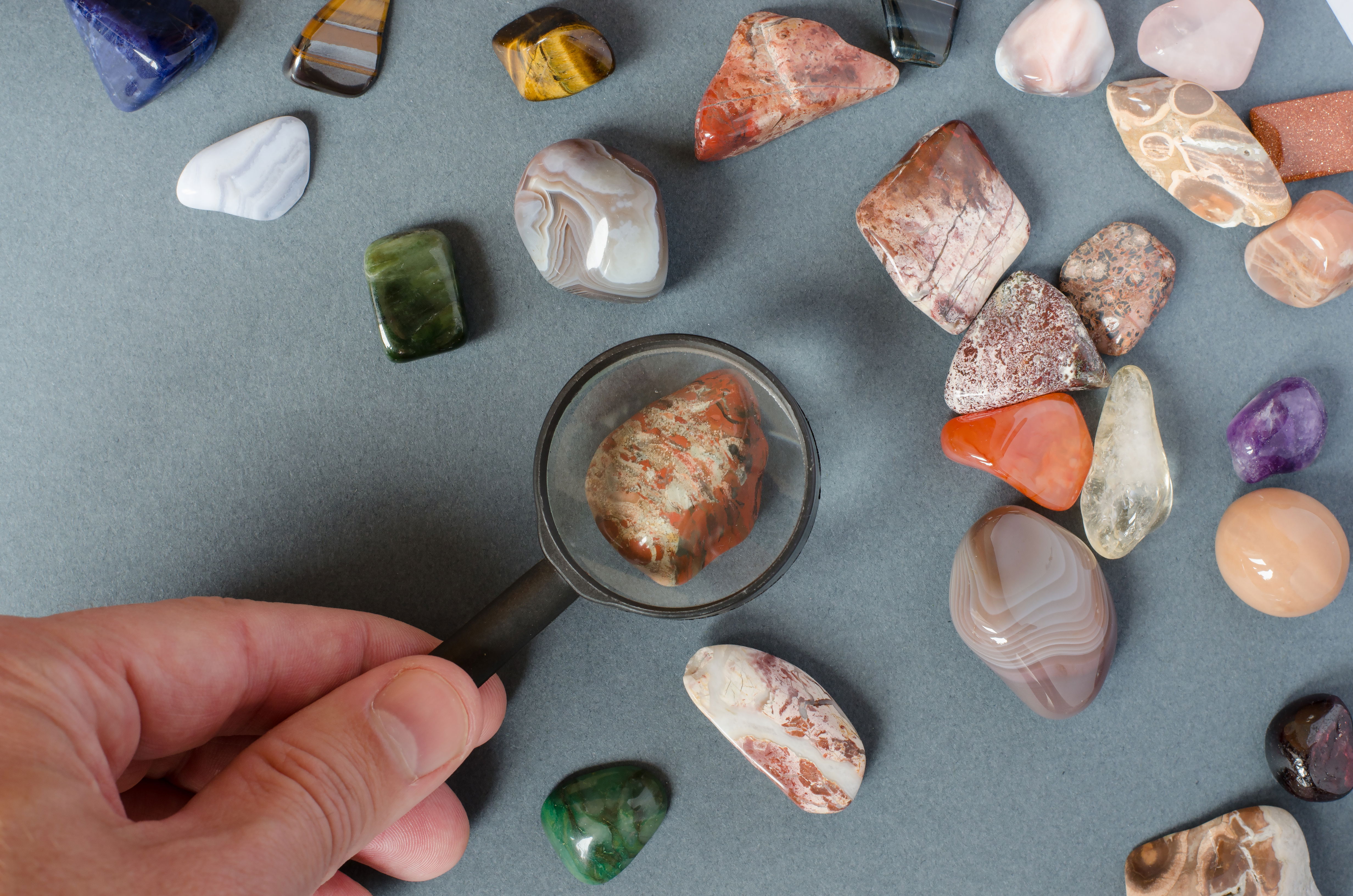Geology for Rockhounds: Gemstone Identification and Collecting in 2025
Introduction
Rockhounding, the passionate pursuit of rocks, minerals, and gems, is more than a hobby—it's a gateway to Earth's ancient stories etched in stone. In 2025, with global interest surging 15% amid ecotourism booms and app-driven hunts, rockhounds are armed with digital field guides and sustainable ethics to unearth treasures like agates, quartz, and tourmalines. Geology provides the foundation: Understanding rock formations, mineral crystallization, and identification techniques turns casual collectors into savvy scouts.
This guide demystifies the science for beginners, blending geological basics with hands-on tips for gemstone identification and collecting. From streak tests to prime U.S. sites like Oregon's agate beaches, we'll cover tools, ethics, and trends like AI apps for real-time ID. Whether you're a weekend wanderer or aspiring lapidary artist, rockhounding fosters wonder and connection to our planet's fiery past—grab your hammer and let's dig in!
Geology Basics: The Building Blocks of Gems
Geology is the study of Earth's materials and processes, and for rockhounds, it's the map to hidden gems. Rocks are created in three ways: igneous rocks form from cooling magma, like quartz from granite; sedimentary rocks come from layers being pressed Gems are minerals prized for beauty, durability, and rarity—quartz (SiO₂) forms in hydrothermal veins, while amethyst (purple quartz) crystallizes in gas pockets. Plate tectonics drives it all: Convergent boundaries spawn volcanic gems like obsidian, and divergent rifts yield geodes. In 2025, climate change exposes new sites—melting glaciers reveal Canadian emeralds—but sustainable collecting is key. Know your rocks: igneous for crystals, sedimentary for fossils, and metamorphic for cabochons. A good field guide like the "Roadside Geology" series ($20) is essential, per Rockhounding.org.
Gemstone Identification: Tools and Techniques
Identification is rockhounding's art—spotting a gem's sparkle amid rubble. Start with the Mohs hardness scale (1-10, talc to diamond) and basic tests; no lab needed.
Essential Tools for ID
- Loupe/Magnifier (10x, $10): Reveals inclusions, like rutile needles in rutilated quartz.
- Streak Plate ($5): Rub mineral on unglazed porcelain; hematite streaks red, limonite yellow.
- UV Light ($15): Fluorite glows blue; yooperlites (sodalite) shine under blacklight in Michigan hunts.
- Hardness Kit ($20): Scratch with known minerals—quartz (7) scratches glass but not topaz (8).
- Field Guide/App: "Rocks & Minerals" app (free) or "Rock Identifier" AI scanner ($5/month) for instant photo ID, 85% accurate in 2025 tests.
Step-by-Step Identification Process
- Visual Inspection: Color, luster (adamantine for diamonds), and cleavage (how it breaks).
- Hardness Test: Scratch with fingernail (2.5), penny (3), and steel nail (6.5).
- Streak and Density: Powder on plate; weigh vs. water displacement for SG (specific gravity, e.g., sapphire 4.0).
- UV/Acid Reaction: Effervesce with HCl? Calcite. Glow? Fluorite.
- Advanced: Polarizing microscope ($100) for birefringence, but field tests suffice for most.
Common gems: Agate (banded chalcedony, 6.5-7 hardness, beachcomb Oregon); Amethyst (violet quartz, 7, geodes in Arizona); Tourmaline (prismatic, 7-7.5, California pegmatites). MisID pitfalls: Glass vs. quartz (glass scratches easier). Practice with kits from Rock Tumbler ($30).

Gemstone Collecting: Sites, Ethics, and Techniques
Collecting is the hunt—ethical, legal, and thrilling. U.S. sites abound; always check BLM permits ($5/day) and no-dig parks.
Prime Collecting Spots in 2025
- Oregon Beaches (Agates, Jaspers): Public shores like Depoe Bay; low-tide hunts yield ocean-polished nodules. 2025 tip: Post-storm waves expose new beds.
- Arizona's Four Peaks (Amethyst): BLM land; hike to 7,600 ft for geodes. Spring digs best; $10 permit.
- California's Himalaya Mine (Tourmaline): Guided tours ($50) for pink pockets; an ethical alternative to illegal digs.
- Arkansas' Crater of Diamonds (Diamonds): $10 entry, 37-carat park; keep what you find.
- Michigan's Upper Peninsula (Yooperlites): Blacklight hunts for fluorescent sodalite; free beaches.
Global: Brazil's pegmatites for emeralds (tours are $100/day).
Collecting Techniques and Tools
- Surface Scouting: Eyeball outcrops; road cuts reveal quartz veins.
- Digging: Rock hammer ($20), chisel for geodes, and sifting screens ($15) for gravels.
- Ethics: Leave no trace; collect less than 1 lb/site; report fossils to parks.
- Safety: Sturdy boots, gloves; watch for rattlesnakes and unstable cliffs. 2025 apps like Rockd GPS-map sites.
Pack: Backpack, water, first aid; group hunts for safety.
Top Gemstones for Rockhounds: Identification and Collecting Tips
Focus on accessible finds.
- Quartz Varieties (7 Hardness): Clear crystals in veins; white streak. Hunt: Roadcuts in the Midwest. Tip: UV for smoky quartz.
- Agate (6.5-7): Banded chalcedony in nodules; conchoidal fracture. Collect: Beaches, Midwest quarries. Lapidary polish yields cabochons.
- Amethyst (7): Purple quartz geodes; vitreous luster. Sites: Arizona mines. Tip: Check for druzy interiors.
- Fluorite (4): Cubic crystals, 4 colors; streaks white, fluoresces. Hunt: Illinois caves. Soft—handle gently.
- Garnet (6.5-7.5): Dodecahedral, red-brown; no cleavage. Collect: New York Adirondacks. Industrial bonus.
2025 Trend: Lab-grown synthetics for ethics, but wild hunts preserve thrill.
Finishing Your Finds: Cleaning and Preservation
Clean with soap; ultrasonic ($30) for gems. Store in padded boxes; label with site/date. Tumblers ($50) polish into jewelry.
2025 Trends in Rockhounding
- Apps: Rock Identifier AI (85% accuracy); Rockd for AR overlays.
- Sustainable Hunts: Carbon-neutral tours; recycled tools.
- Community: Rockhound Reddit's 2025 challenges; virtual digs via VR.
Challenges: Over-collecting; solution: Cap finds at 5 lb/trip.
Conclusion
Rockhounding in 2025 blends geology's wonders with gem-hunting joy—from agate beaches to amethyst geodes. With tools like streak plates and apps, identify and collect ethically, unearthing Earth's secrets. As RockHounding.org says, "Every rock tells a story"—dig yours!